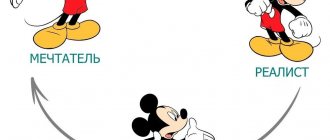The Kenneth Thomas test for behavior in a conflict situation is one of the most popular of its kind. The idea of the two-dimensional conflict resolution model was co-authored by Ralph Kilmann, which is why the technique is also called the Thomas-Kilmann test. The authors believed that people should not strive to avoid conflict at all costs, but to manage them competently.
The two-dimensional conflict resolution model derived by the authors consists of two dimensions:
- Personal behavior that takes into account the interests of other people
- Personal behavior that ignores the interests and goals of other people and is aimed at protecting one’s own interests
Thus, based on various combinations of the severity of dimensions, 5 methods of conflict resolution are identified:
Rivalry
As a rule, rivalry is expressed in the active imposition of your preferred outcome on the other side of the conflict. Sometimes it is justified, for example, when the decision made will lead to benefits for everyone around, and not just one or a few people, or when the proposed solution is clearly more constructive. Also, rivalry is often used when there is not enough time to persuade an opponent and challenge his arguments.
Rivalry should be shown in dangerous, extreme situations when there is no time to convince the other side and an unresolved issue can lead to dangerous consequences.
Device
Adaptation can manifest itself in a voluntary or forced refusal to continue the struggle and surrender of one’s positions in whole or in part. For example, this could come from:
- realizing one's wrong
- significant dependence on the opponent
- insignificance of the problem
- desire to maintain good relations with an opponent
- already received damage and unwillingness to lose even more
- threats of even more negative consequences
- influence of a third party intervening in the conflict
- realizing there is no chance of winning
One example of such behavior in a conflict is the “three D rule” familiar to all motorists - “Give Way to a Fool.”
Compromise
Often opponents are ready to partially sacrifice their interests and end the conflict without going into a state of full-scale war, where only one will remain, but with huge losses. In this way, there is a willingness to forgive the opponent, to renounce some of the initial demands, and to partially admit that the opponent is right.
Compromise is extremely effective when both parties understand that they have approximately equal capabilities and mutually exclusive interests. Or they are satisfied with a partial and perhaps temporary solution in the face of the threat of losing everything.
Nowadays, compromise is the most commonly used means to end conflicts.
Avoidance
Avoidance can also be called avoidance when one of the parties tries to get out of the conflict with a minimum of actions and damage. Usually used after unsuccessful attempts to defend one’s innocence. In this case, the conflict remains unresolved, but fades away for some time or forever. Avoidance may turn out to be a completely correct and necessary reaction to a conflict that has protracted beyond all measure.
You can also try to avoid continuing the conflict if you want to play for time, develop a new strategy of behavior, lack of desire to solve the problem at all and leave the decision to the will of the opponent, or simply in the absence or lack of time and energy to continue what you started.
Cooperation
The most constructive and effective behavior in almost any conflict. Unfortunately, it only works with the mutual desire of the opponents and the willingness to view the opposite side not as an enemy who needs to be destroyed by any means, but as an ally to effectively solve the problem to the benefit of both sides.
A collaboration strategy is effective when:
- all parties involved understand the importance of solving the problem,
- depend on each other
- have no prejudices against each other
K. Thomas believed that by avoiding conflict, none of the parties involved would achieve success. With such behavior as compromise, competition, adaptation, either both parties lose, since they reduce their demands and make concessions, or only one of the parties to the conflict, and the second emerges as a clear winner. And only in case of mutual cooperation both parties win, receiving everything they need and even more.
Description of the technique
The personality questionnaire was developed by K. Thomas and is intended to study personal predisposition to conflict behavior and identify certain styles of resolving a conflict situation. The technique can be used as a guide for studying the adaptive and communicative characteristics of a person and the style of interpersonal interaction.
In Russia, the test was adapted by N.V. Grishina.
The test can be used in group examinations (and then the stimulus material is read aloud) and individually (in this case, it is necessary to make 30 pairs of cards with statements written on them, and then ask the subject to choose one card from each pair, the one that seems closer to the truth in relation to his behavior). Time spent - no more than 15-20 minutes.
Diagnosis of personality behavior
In order to determine how an individual behaves in a dispute, there is a special questionnaire. It was created by scientist K. Thomas in 1956 in order to adapt soldiers to civilian life. However, this system was so unique and useful that in 1972 it was already recognized as an intellectual product. The questionnaire is called the Thomas test and is used in both large and small companies to develop the potential of employees and improve their communication skills. Thomas identified 5 types of behavior: cooperation, competition, avoidance, compromise, adaptation. As a rule, each person chooses one or several strategies and successfully uses them throughout his life.
Theoretical basis
In his approach to the study of conflict phenomena, K. Thomas emphasized changing the traditional attitude towards conflicts. Pointing out that the term “conflict resolution” was widely used in the early stages of their study, he emphasized that the term implies that the conflict can and should be resolved or eliminated. The goal of conflict resolution, then, was some ideal conflict-free state where people work in complete harmony. However, recently there has been a significant change in the attitude of specialists to this aspect of conflict research. It was caused, according to K. Thomas, by at least two circumstances: the realization of the futility of efforts to completely eliminate conflicts, and an increase in the number of studies pointing to the positive functions of conflicts. Hence, according to the author, the emphasis should be transferred from eliminating conflicts to managing them.
In accordance with this, K. Thomas considers it necessary to concentrate attention on the following aspects of the study of conflicts: what forms of behavior in conflict situations are characteristic of people, which of them are more productive or destructive; how it is possible to stimulate productive behavior.
To describe the types of behavior of people in conflict situations, K. Thomas considers a two-dimensional model of conflict regulation to be applicable, the fundamental dimensions of which are cooperation, associated with a person’s attention to the interests of other people involved in the conflict, and assertiveness, which is characterized by an emphasis on protecting one’s own interests. According to these two main dimensions, K. Thomas identifies the following methods of conflict resolution:
- competition (competition) as the desire to achieve satisfaction of one’s interests to the detriment of another;
- adaptation, which means, as opposed to competition, sacrificing one's own interests for the sake of another;
- compromise
- avoidance, which is characterized by both a lack of desire for cooperation and a lack of tendency to achieve one’s own goals;
- cooperation, when participants in a situation come to an alternative that fully satisfies the interests of both parties.
Five ways to resolve conflicts
K. Thomas believes that when conflict is avoided, neither party achieves success; in such forms of behavior as competition, adaptation and compromise, either one of the participants wins and the other loses, or both lose because they make compromise concessions. And only in a situation of cooperation both parties benefit. In his Questionnaire for Identifying Typical Forms of Behavior, K. Thomas describes each of the five listed possible options with 12 judgments about the individual’s behavior in a conflict situation. In various combinations, they are grouped into 30 pairs, in each of which the respondent is asked to choose the judgment that is most typical for characterizing his behavior.
Compromise
The description of the Thomas test also contains another very important and frequently encountered behavior model, which is called compromise. A person is ready to make concessions, but at the same time receive something in return. Many people believe that this is the best way to resolve conflict situations, but this is not entirely true. As a result of this pattern of behavior, the main issue remains unresolved. In addition, both participants in the dispute are dependent on each other; each asks himself the question: “How can I please my opponent in order to get what I want?” As a result, a person achieves his goal by cunning, but it is unlikely that such a model resolves the conflict completely. Very often this type of behavior is used in relation to children. However, when the child understands that the parent also depends on his opinion, he begins to demand more, argue even more and eventually gets everything he wants.
Processing the results
For each answer that matches the key, one point is awarded for the corresponding type of behavior in a conflict situation.
Key
| № | Rivalry | Cooperation | Compromise | Avoidance | Device |
| 1 | A | B | |||
| 2 | B | A | |||
| 3 | A | B | |||
| 4 | A | B | |||
| 5 | A | B | |||
| 6 | B | A | |||
| 7 | B | A | |||
| 8 | A | B | |||
| 9 | B | A | |||
| 10 | A | B | |||
| 11 | A | B | |||
| 12 | B | A | |||
| 13 | B | A | |||
| 14 | B | A | |||
| 15 | B | A | |||
| 16 | B | A | |||
| 17 | A | B | |||
| 18 | B | A | |||
| 19 | A | B | |||
| 20 | A | B | |||
| 21 | B | A | |||
| 22 | B | A | |||
| 23 | A | B | |||
| 24 | B | A | |||
| 25 | A | B | |||
| 26 | B | A | |||
| 27 | A | B | |||
| 28 | A | B | |||
| 29 | A | B | |||
| 30 | B | A |
Questionnaire by K. Thomas to identify the type of behavior in conflict situations
Instructions : “You are offered 30 pairs of judgments. In each pair, you must choose the judgment that is most typical for characterizing your behavior. Place the letters A or B in the appropriate place on the registration sheet.”
1.
A. Sometimes I allow others to take responsibility for resolving a controversial issue.
B. Rather than discussing what we disagree on, I try to draw attention to what we both disagree with.
2.
A. I'm trying to find a compromise solution.
B. I try to settle the matter taking into account the interests of the other and my own.
3.
A. I usually persistently strive to achieve my goal.
B. I try to reassure the other and mainly preserve our relationship.
4.
A. I'm trying to find a compromise solution.
B. Sometimes I sacrifice my own interests for the sake of the interests of another person.
5.
A. When resolving a controversial situation, I always try to find support from another.
B. I try to do everything to avoid unnecessary tension.
6.
A. I'm trying to avoid causing trouble for myself.
B. I try to achieve my goal.
7.
A. I try to postpone the resolution of a controversial issue in order to resolve it finally over time.
B. I consider it possible to give in to something in order to achieve something else.
8.
A. I usually persistently strive to achieve my goal.
B. I first try to clearly define what all the interests and issues involved are.
9.
A. I think that you should not always worry about any disagreements that arise.
B. I make efforts to achieve my goal.
10.
A. I am determined to achieve my goal.
B. I'm trying to find a compromise solution.
11.
A. The first thing I do is try to clearly define what all the interests and issues involved are.
B. I try to reassure the other and mainly preserve our relationship.
12.
A. I often avoid taking positions that might cause controversy.
B. I give the other person the opportunity to remain unconvinced in some way if he also meets me halfway.
13.
A. I propose a middle position.
B. I insist that it be done my way.
14.
A. I tell the other my point of view and ask about his views.
B. I am trying to show the other the logic and advantages of my views.
15.
A. I try to reassure the other and mainly preserve our relationship.
B. I try to do everything necessary to avoid tension.
16.
A. I try not to hurt the other person's feelings.
B. I am trying to convince another of the benefits of my position.
17.
A. I usually persistently try to achieve my goal.
B. I try to do everything to avoid unnecessary tension.
18.
A. If it makes the other person happy, I will give him the opportunity to have his way.
B. I give the other person the opportunity to remain unconvinced in some way if he also meets me halfway.
19.
A. The first thing I try to do is to clearly define what all the interests and issues involved are.
B. I try to postpone the resolution of a controversial issue in order to finally resolve it over time.
20.
A. I am trying to overcome our differences immediately.
B. I try to find the best combination of benefits and losses for both of us.
21.
A. When negotiating, I try to be attentive to the wishes of the other.
B. I always tend to discuss the problem directly.
22.
A. I try to find a position that is in the middle between my position and the other person's point of view.
B. I stand up for my desires.
23.
A. As a rule, I am concerned with satisfying the desires of each of us.
B. Sometimes I provide opportunities for others to take responsibility for resolving a controversial issue.
24.
A. If the position of another seems very important to him, I will try to meet his wishes.
B. I try to persuade the other to reach a compromise.
25.
A. I am trying to show the other the logic and advantages of my views.
B. When negotiating, I try to be attentive to the wishes of the other.
26.
A. I propose a middle position.
B. I am almost always concerned with satisfying the desires of each of us.
27.
A. I often avoid taking positions that might cause controversy.
B. If it makes the other person happy, I will give him the opportunity to have his way.
28.
A. I usually persistently strive to achieve my goal.
B. When dealing with a situation, I usually try to find support from the other person.
29.
A. I propose a middle position.
B. I think that you should not always worry about any disagreements that arise.
30.
A. I try not to hurt the other person's feelings.
B. I always take a position on a controversial issue so that we, together with another interested person, can achieve success.
Interpretation of results
The number of points scored by an individual on each scale gives an idea of the severity of his tendency to display appropriate forms of behavior in conflict situations. The type(s) with the maximum number of points is considered dominant.
- Rivalry:
the least effective, but most often used method of behavior in conflicts, is expressed in the desire to achieve satisfaction of one’s interests to the detriment of another. - Accommodation:
means, as opposed to competition, sacrificing one's own interests for the sake of another. - Compromise:
compromise as an agreement between the parties to the conflict, reached through mutual concessions. - Evasion (avoidance):
characterized by both a lack of desire for cooperation and a lack of tendency to achieve one’s own goals - Cooperation:
when participants in a situation come to an alternative that fully satisfies the interests of both parties.
Results of diagnostics of the dominant strategy of psychological defense in communication V.V. Boyko
How not to give in to provocations?
strategies for behavior in a conflict situation Dominant strategies of psychological defense in communication:
· peacefulness is characteristic of 14 subjects, which is 35% of the entire group;
· avoidance is typical for 15 subjects, which is 37.5% of the entire group;
· aggression was typical for 11 subjects, which is 27.5% of the entire group.
Conclusions: the majority of subjects (15, 37.5%) are characterized by an avoidance strategy in communication.
When comparing the results of this test and the results of the Eysenck questionnaire (we divided all subjects into emotionally stable and emotionally unstable extroverts and introverts and calculated the mode of communication defense strategy), we can also draw the following conclusions:
· for emotionally stable extroverts and introverts, the dominant defense strategy in communication is peacefulness. This finding is consistent with our hypothesis;
· For emotionally unstable extroverts, the dominant defense strategy in communication is aggression. This finding is also consistent with our hypothesis;
· for an emotionally unstable introvert - the only one in this group - the dominant strategy is aggression.
(applications 6,7,8)
Two-dimensional conflict management model
The Thomas test is a technique based on a two-dimensional model of conflict management. The first dimension is assertiveness. Characterized by personal behavior based on attention only to one’s own person and ignoring the opponent
The second is the complete opposite of the first, and behavior is characterized by attention to the second side of the conflict. It is these two dimensions that refer to the five types of behavior in conflict situations described above and used in a technique such as the Thomas test
The strategy of behavior in a conflict situation is determined by special 60 statements. They are divided into 30 pairs, and from each you must choose the option (A or B) that is most acceptable for the person being tested. Next, based on the table with the results, for each matching answer you need to give yourself 1 point in the corresponding column. The last stage in testing can be considered the calculation of the number of points for each strategy. The column with the highest number of points will indicate the model of behavior that a person uses most often in conflict situations.
Let's consider all 5 types of behavior patterns and determine which of them is the most correct.
Avoidance
“Turtle” people hate conflicts, and therefore try in every possible way to postpone or avoid a showdown
This position is characterized not only by an inability to defend one’s own interests, but also by extreme inattention to the interests of others. Such a person prefers to hide from a problem rather than try to solve it.
The reason for this is self-doubt and a victim complex.
This type of behavior can be justified if the cause of the conflict is insignificant for both parties. In any serious situations, it can lead to a further increase in misunderstanding between people and an even greater accumulation of mutual claims. Such a protracted confrontation, painful for both sides, sooner or later ends in an explosion of emotions and a stormy showdown. The sad consequences of this may be irreversible.
If the Thomas test showed such a result, a person should be bolder and not be afraid of problems
It is important to understand that only a solved problem disappears, while an unresolved one deprives a person of strength and makes his life absolutely unbearable. You can't hide from this
Thomas's Five Ways to Resolve Conflicts
From these two dimensions, he derives several ways that conflict can be dealt with.
- Competition is a way to provoke in people the desire to win and overtake their rivals.
- Adaptation is the opposite of rivalry, the desire to accept the interests of the other participant in the dispute.
- Compromise is a path of negotiation, mutual concessions, checks and balances.
- Avoidance is a deliberately passive situation, indifference, indifference to victory or defeat.
- Cooperation is the best option in which the parties to the dispute achieve their interests and no one loses.
It follows from this that just avoiding conflicts does not bring any results. Yes, a person cannot lose, but one should not expect any of his wishes to be fulfilled either. With other types, some result is always achieved. A completely negative result is only possible with a compromise, since both sides make concessions to resolve the conflict. Only cooperation gives a completely positive result.
Happy testing!
Evasion
For turtle people, conflict is unacceptable. They try with all their might to avoid clarifying the relationship directly or put off analyzing the situation. The position is distinguished not so much by the inability to defend one’s own point of view, but by the extreme degree of disrespect for the interests of others.
It is typical for a turtle to hide from a problem rather than seek a solution. This behavior is caused by a “victim complex”. The tactic can be justified by the insignificance of the cause of disagreement for the parties.
In a more serious situation, such an attitude can lead to an extreme increase in misunderstanding and concentration of mutual claims. The protracted confrontation is becoming increasingly painful for both sides.
It can end at any moment in a super-emotional showdown. The consequences may become irreversible. If the result of the test was exactly this result, the person needs to become more courageous and not be afraid of problems
It is important to understand that the issue will disappear only after it is resolved
Left unanswered can deprive one of strength and make life unbearable. And it’s impossible to hide all the time.
Competition
The “shark” man tends to follow his own interests in everything, with absolutely no interest in the opinions of others. He does not accept compromises and believes that the victory of one always means the complete defeat of the other. In an effort to achieve his goal, such a person will go over his head without hesitation. His arsenal may even include actions that are not entirely legal and ethical; he can easily decide to commit deception, forgery, or provocation. The “Shark” always strives to have complete information about the enemy, but will never care about his good name or spiritual comfort.
This line of behavior can be justified only in an insignificant number of cases. Most often this happens in acute crisis situations, when a certain person vested with certain powers must very quickly restore order and present some result. In all other cases, the behavior of a “shark” is unacceptable and can quickly destroy any long-term relationship - both work and personal.
The Thomas test can easily identify such dangerous tendencies.
A person’s conflict behavior is a serious problem for others, which means that special care will need to be taken when communicating with him.
Device
The exact opposite of the “shark” is the “teddy bear”. A person prone to this type of behavior can easily sacrifice his interests to please his opponent. As a rule, people who sincerely believe that their opinion should not be taken into account.
This line of behavior may be successful if the subject of the dispute is not of great importance. By yielding to your opponent, you can maintain friendly relations with him, and the consequences of the conflict will be minimal
However, refusal to defend one’s interests in any important dispute can negatively affect the events in the person’s life. He risks losing the respect of others and being branded spineless
Such people often become objects of manipulation.
If the Thomas test reveals a tendency to adapt, the person urgently needs to start working on his self-esteem, and as it increases, his behavior will change.









